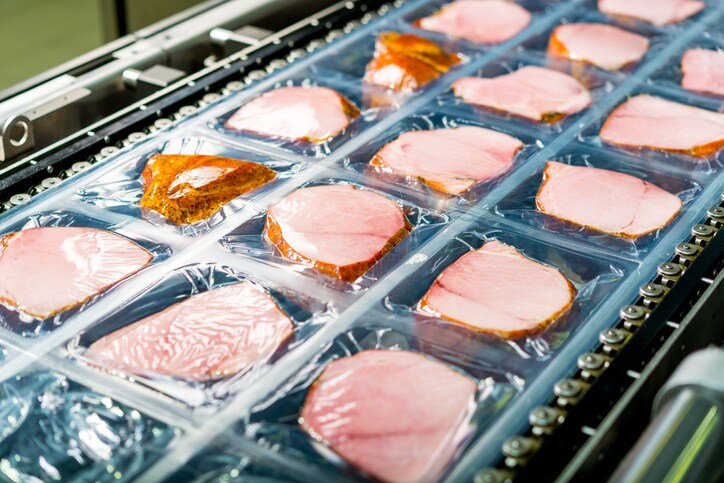 We have previously written about the “product effect” of baked breads and snacks being a challenge for food metal detectors. Product effect refers to a product that has some conductive or magnetic properties that affect the fields generated in a metal detector.
We have previously written about the “product effect” of baked breads and snacks being a challenge for food metal detectors. Product effect refers to a product that has some conductive or magnetic properties that affect the fields generated in a metal detector.
Bread, however, is only one type of food product that may have issues due to product effect. Any high-salt, high-moisture products, complicated by air bubbles and differing densities, can negatively impact a metal detector’s ability to distinguish between actual non-ferrous metal contaminants and the false signal given by a combination of typical product attributes.
Metal inside a product that has product effect can be hidden at one frequency and not at another. The interaction of the metal and the product is what is important—not just the metal type. In some situations, metal detectors with multi-frequency, multi-scan technology are recommended. In other situations, X-ray detection and inspection systems will produce significantly better results, since product effect is not a factor, though you may need to consider other issues. (Read How to Beat The Challenge of Baked Bread’s Physical Properties During Inspection.)
These four categories of packaged foods have considerable product effect because they are wet, salty, conductive, layered or have high mineral content:
- Animal proteins: Meats, poultry or seafood products can be processed and packaged in many different forms. They can be raw or cooked, or contained in some sort of prepared meal package. Generally speaking, all products of these types have high product effect and food safety is of the utmost importance.
- Bakery: Baked products are typically metal detected right after leaving the oven, when they are hot, salty and can be sliced or stacked. Baked goods are notorious for having high and variable product effect, so traditional metal detectors can struggle with these products.
Food metal detectors work extremely well with frozen baked goods, which no longer have the same product effect as “just out of the oven” versions. The challenge is to make sure that the freezer is efficient and holds the product at the correct temperature. If a product isn’t completely frozen, its unfrozen center will have a tendency to look like a piece of metal to the detector.
In addition, many cake and pie products are frozen immediately after production, so some bakers choose to inspect the items after they’re case packed using food X-ray inspection that can accommodate the case size.
- Dairy: Dairy products include ice cream, yogurt, cheese, sour cream and cottage cheese, as well as other products. Cheese comes in many forms and has high conductivity, so it is one of the most difficult products for metal detection. Sauces and dressings that contain dairy can have complex and frequently modified formulations, which can negatively affect metal detector performance due to varying product effect.
- Fruits and vegetables: Fresh and individually quick-frozen (IQF) produce products are wet, conductive and possibly layered with iron and other minerals at various temperatures.
The best way to overcome the wet, salty, high-mineral product effect challenge is to use additional frequencies. Food metal detectors that are equipped with multiscan technology enable operators to pick a set of up to five frequencies from 50 kHz to 1000 kHz. The technology then scans through each frequency at a very rapid rate. Running five frequencies helps to get the machine close to ideal for any type of metal you might encounter, and you can optimize sensitivity by choosing the optimal frequency for each type of metal of concern. The result is that the probability of detection goes up exponentially and escapes are reduced.
Editor’s Note: Do you wonder if you have the right food product inspection equipment in place to keep consumers safe and protect your brand? To find out how they work and which one will work best for you, read A Practical Guide to Metal Detection and X-ray Inspection of Food.


I did not know that cheese has such as high dynamism when talking about electricity. One of my father’s friend owns a farm and he sells dairy products locally. It would be nice for him to have a tool to help him detect any pieces of metals that might have filtered to the products.